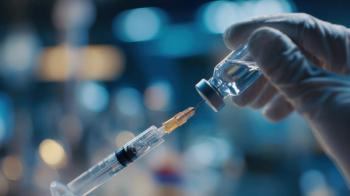
Long-term PPI use may not influence fracture risk
Long-term use of proton pump inhibitors (PPI) may not significantly influence the development of osteoporosis, according to a recent study published July 10 in The American Journal of Gastroenterology.
Long-term use of proton pump inhibitors (PPI) may not significantly influence the development of osteoporosis, according to a recent
The study, led by Laura E. Targownik , MD, MSHS, a gastroenterologist at University of Manitoba, in Winnipeg, Manitoba, Canada, found that PPI users had lower bone mineral density (BMD) at baseline than PPI non-users, but upon 10 years of follow-up, PPI use did not appear to be associated with accelerated BMD loss.
The researchers assessed data from the Canadian Multicentre Osteoporosis Study, which enrolled a population-based sample of Canadians who reported medical history information, drug use, exposure to certain risk factors for osteoporosis and fracture, diet, and socio-demogaphic information. Participants’ BMD was assessed through dual X-ray absorptiometry scanning of the femoral neck, total hip, and lumbar spine (L1–L4) at baseline, and then again at 5 and 10 years to determine the independent association of PPI exposure and baseline BMD, as well as change in BMD at 5 and 10 years.
After adjusting for multiple confounders, researchers found that PPI use was associated with lower baseline BMD at both the total hip (−0.019 ± 0.008 g/cm², P=.028) and the femoral neck (−0.022 ± 0.007 g/cm², P=.002), but not at the lumbar spine (− 0.014 ± 0.011 g/cm², P=.179).
When they excluded patients who used osteoprotective medications and glucocorticoids, PPI use was still associated with lower adjusted baseline BMD at the femoral neck (−0.026 ± 0.008 g/cm², P=.002) and total hip (−0.026 ± 0.010 g/cm², P=.008). Similarly, when they adjusted the analysis for patients over aged 50 years, PPI use was associated with lower adjusted baseline BMD at the total hip (−0.021 ± 0.010 g/cm², P=.028) and femoral neck (−0.025 ± 0.008 g/cm², P=.002).
After adjusting again for potential confounders, the researchers found no significant association in the overall cohort or when restricted by osteoprotective medication use or age between continuous PPI use and the rate of change in BMD at any of the measurement sites from baseline to 5-year follow-up or 10-year follow-up, or from 5-year follow-up to 10-year follow-up.
The authors cited several reasons for the discordant findings, including the possibility that PPI users had unmeasured variables that predisposed them to low BMD, a low ratio of continuous PPI users provided insufficient power to detect a clinically significant change in BMD, and that the possibility of a ceiling effect occurs with PPI use soon after the initiation of therapy.
“Taking the results of these previous studies and the current analysis into account, the weight of the evidence suggests an absence of an association between PPI use and BMD change over time,” the authors wrote. “This further increases the likelihood that the reported association between PPI and fractures may represent baseline differences in fracture risk between PPI users and non-users, which are unrelated to the actual use of the medication.”
Newsletter
Get the latest industry news, event updates, and more from Managed healthcare Executive.




















































